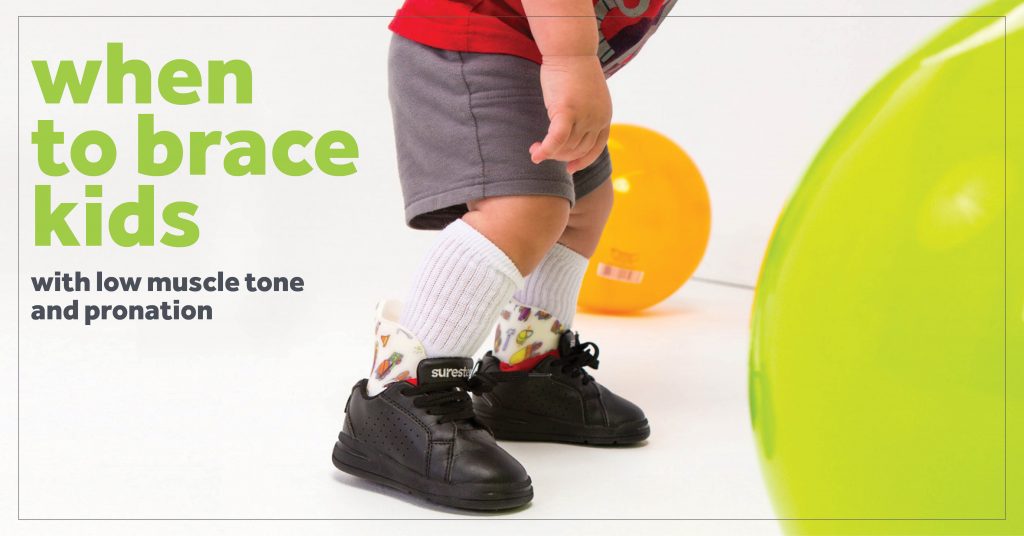28
Dec
2015
when to brace kids with low muscle tone and pronation

I am frequently asked the question when do we need to consider bracing a child with hypotonia (low muscle tone) and pronation? I have three general guidelines:
- Is the child showing gross motor delays? If a child has experienced delays in early gross motor development, such as neck control, difficulty in sitting or crawling, then I anticipate these delays to get more significant as they begin their upright gross motor development. If these delays are present, I want to do everything I can to support the child. This includes providing a good stable foundation to pull up to stand, cruising and taking independent steps.
- Does the child have hypermobility combined with the hypotonia? Hypotonia usually comes with laxity in the ligaments resulting in hypermobile joints. This will make it more difficult for the child to activate their muscles and to know where their body is in space (proprioception). As a child begins to develop motor plans, proprioception is key. Children with hypermobility often have decreased proprioception so we see delays in motor planning and motor execution.
- In weight-bearing, are we beginning to see poor alignment, poor development of a typical heel-toe gait pattern and/or compensations to stabilize weaker muscles and hypermobile joints? In children with hypertonia and excessive pronation, we see the weight-line shift inwardly (medially) beginning at the heel and moving up the leg. As a young child is growing, the bones are easily molded and we often see long-term effects with poor alignment of the legs throughout the lifetime. Typically, as children begin to stand and walk, they strengthen their muscles as they use them in gait. Children with hypotonia and pronation often develop a poor gait pattern. Instead of a heel-toe pattern of walking, we see a toe-toe or toe-heel pattern. Compensations such as knee hyperextension, a forward lean at the trunk or excessive lordosis are frequent and interfere with strengthening the muscles in the core and legs. We often find decreased strength in the dorsiflexors, plantarflexors, knee extensors, hip extensors and abdominal muscles. Over time, the hypermobile child with this gait pattern will develop contractures of the midfoot, the hind foot and the ankle.
The Surestep SMO is a great choice to use in young children with hypermobility, hypotonia and excessive pronation. The Surestep SMO uses an ultra-thin flexible plastic and compression to support the foot/ankle. This prevents excessive pronation, while allowing small side to side movements necessary for balance reactions. The unique design also encourages the development of a heel-toe pattern of walking. With Surestep SMOs, the child is able to move more quickly from pull to stand to independent walking without interfering with normal development of transitional movements, balance reactions, muscle strength (especially in the intrinsic muscles of the feet and the dorsiflexors) and proprioception. But, the benefits of Surestep SMOs don’t stop at walking. They also support the feet and ankle while allowing the child to run, jump and play safely.
Learn more about Surestep SMOs